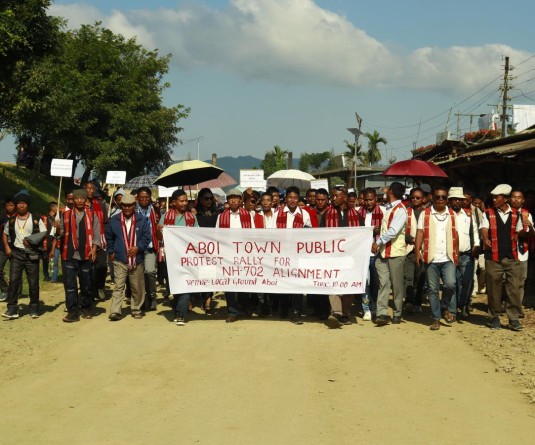
Nagaland Pig Breeding Policy – Part II
Our Correspondent
Kohima | September 17
Nagaland produces 66.6% of the total requirement of livestock worth Rs. 1, 673.35 crore, leaving behind a shortfall of 33.32 %, according to the Sample Survey Report of 2014-15.
Meanwhile, the State imported animal husbandry products worth Rs. 214.74 crore in monetary terms. The value of import of meat, eggs and dairy products stood at Rs. 215. 46 crore in 2013-2014 and registered a fall of Rs. 0.72 crore in 2014-15.
This was informed in the Nagaland Pig Breeding Policy brought out by State’s Department of Animal Husbandry & Veterinary Services.
It stated that production of milk, meat, and eggs in the State during 2014-15 was 75.92 thousand tonnes, 39.27 thousand tonnes, and 706 lakh respectively.
Livestock rearing is a year round activity and production volume is quite low compared to demand.
On the other hand, cattle rearing in Nagaland is confined to limited areas. Districts such as Dimapur and Kohima rear dairy cattle and in the valleys of Peren district, cattle and buffaloes are reared for meat and draught purposes.
The State’s pig population as per the XIXth Livestock Census 2012 stands at 5, 03, 688, of which, 75.59% (3,80,719) are crossbreds and 24.41% (1, 22, 969) are indigenous. It stated that pig rearing occupies an important position in the farming system in Nagaland as it is closely interlinked with the other agricultural operation performed by the tribal people for livelihood.
The pig production system in Nagaland is mostly low input backyard system.
Farmers of this region have evolved a self-sustainable local resource based production system, in which, pigs are mainly dependent on local vegetation, crop residues and kitchen waste. This system aims to get medium output from nearly zero input and mostly based on the locally available resources.
Although the local small, indigenous pigs have been steadily replaced with improved crossbreeds over recent years, pig production is still largely traditional: piglets are brought-in, kept in simple pens (free-ranging pigs are not allowed on public health and nuisance grounds, including risk of damaging crops), health care and other inputs are largely unavailable and feeding systems rely mostly on forages collected from the forest and kitchen and garden wastes.
The traditional system of feeding involves feeding a wet slop made up of different forages collected from the forest (abundant in the wet season but scarce in winter) combined with garden and kitchen waste, all cooked with firewood. Purchased wheat bran and also some maize and rice are sometimes fed by some farmers. Feeding of balanced concentrate feed to pigs is neither popular nor are the concentrates readily available in the market. Some farmers buy a couple of feed ingredients, mainly wheat bran or rice polish, from the local feed stall and feed to pigs with any additional farm and kitchen waste. However, they hardly buy any protein rich feed ingredients or mineral and vitamin mixture. This is possibly because pig producers lack knowledge on pig nutrition together with financial constraints.
The report further stated that these traditional feeds provide inadequate nutrition to support acceptable growth rates and maintain good health. In addition, collecting forages is a major cause of forest degradation; this is exacerbated because the forages are cooked before feeding which requires enormous amounts of fuel wood to be collected in addition to wild forages. Also, collection of forages and fuel wood places an enormous burden on women who are traditionally responsible for these activities.
The Department of Animal Husbandry & Veterinary Services is currently maintaining 10 piggery farms to maintain swine breeds of superior germplasm aimed at upgrading local animals at farmer level to enhance productivity and production, and utilize as demonstration farms to progressive piggery farmers and generate revenue for the state.





